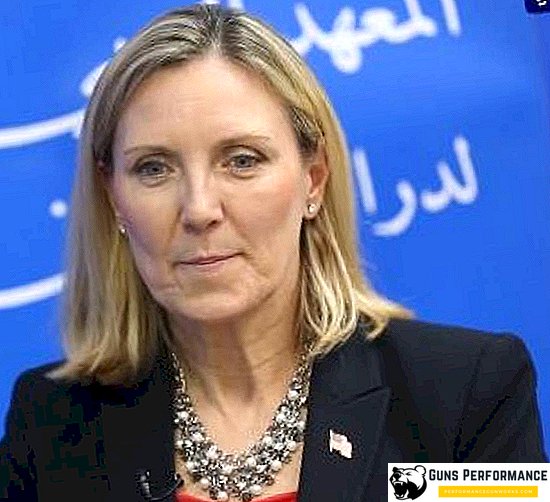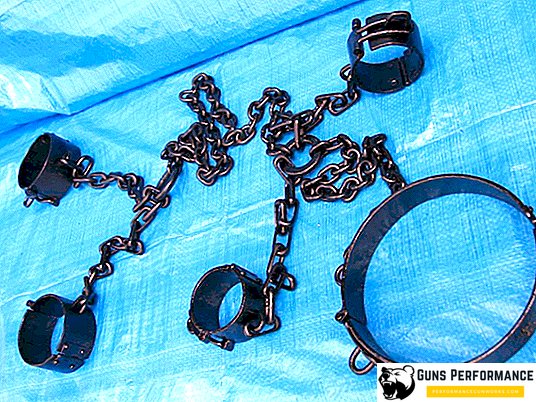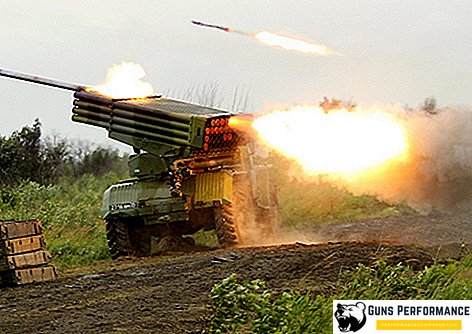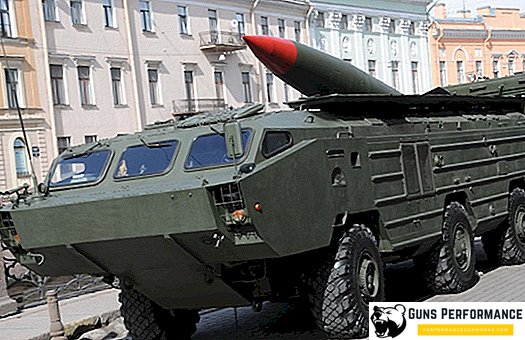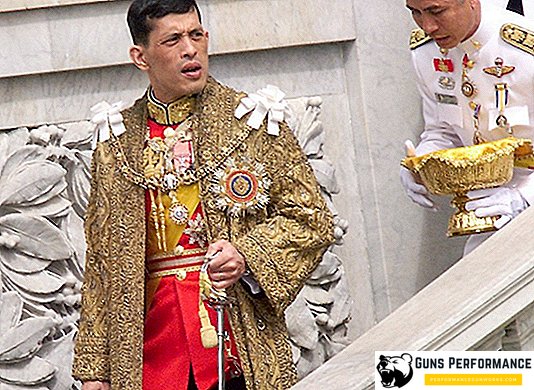
Kings and emperors of different countries have always been outstanding personalities. It does not matter if the people loved their rulers or hated, the name of each monarch is forever inscribed in history. Currently, such a form of government as a monarchy is a relic of the past, and has been preserved only in a few countries of the world. In Europe, the monarchs are public figures, and practically do not participate in government, such as the Queen of Great Britain. As for some of the rulers of the Eastern states, there and now one can meet real tyrants who have concentrated all power in the country in their hands.
In Thailand, the monarchy still exists, and the people sincerely love their ruler, at least nothing but praise addressed to the king from the Thais is impossible to hear. This is facilitated by local laws, according to which any blasphemy against a monarch is a state crime and is punishable by imprisonment.
The history of the first Thai state

To understand how significant the role of the king in Thailand, you need to return to deep antiquity. The first states founded by the Thai tribes appeared from the 1st to the 6th centuries of our era. In this era, the Thais were represented by small states of monks who were under the auspices of the Funan Empire. From the 9th to the 13th century, the whole territory of modern Thailand was part of the Cambujadesh Empire.
According to ancient sources, the ancestors of modern Thais lived in the territory of the modern Yunnan province in China. Until the VII century, the tribes of the ancient Thais lived in the city-states and were ruled by elected rulers who could not pass on their power by inheritance. In the VII century, the ancient Thais fell under the authority of the state of Nanzhao, which rather successfully fought with the Chinese Tang Empire.
Starting from the 10th century, Thai tribes began to gradually settle the territories in which the following states are located:
- Vietnam;
- Myanmar;
- Thailand.
In the valley of the Tiao Phraya River, several small states were founded by the Thai tribes, which were directly dependent on the Khmer Empire.
1238 is considered the founding year of the first independent state of the Thais. The new state was called Sukhothai. Already in those days, the name of the people "Thay" appeared, which means "free, independent." Since in 1253 the empire of Nanzhao was conquered by the Chinese, the Thai tribes, who did not want to fall under the rule of the Chinese, hurried to move to the territory of the new state Sukhothai.
The most famous ruler of the kingdom of Sukhothai was Rama the Great or Ramkamkheng. He ruled in the second half of the 13th century. This ruler made many military reforms, as a result of which he created a strong army, which was able to subjugate not only the whole territory of modern Thailand, but also part of the lands of Taos and Myanmar. After the death of Ramkammahenga, the kingdom weakened and lost a lot of previously occupied lands. In 1378, the independence of the Thais from the kingdom of Sukhothai came to an end, since it was conquered by the kingdom of Ayutkhaya.
Thailand in the era of the kingdom of Ayutkhaya

The kingdom of Ayutkhaya or Ayutthaya was formed in the XIV century in the southern regions of Thailand. The first ruler of this kingdom became Ramathibodi I. He ruled from 1350 to 1369 years. This king considered the strengthening of his state its main goals and objectives. Despite the reforms and the rapid development of the new state, the kingdom of Ayutkhaya was not strong enough to seize power throughout Thailand.
After the death of the first king, the country Ayutkhaya split into a series of semi-independent principalities, each of which was headed by the king’s sons. Each of them considered himself worthy of the status of a king and issued decrees concerning the administration of the entire state. The principality of Ayutkhaya was a fairly developed state, the administrative apparatus of which copied the Chinese management system. The civil administration included the following ministries:
- The ministry of administration of the metropolitan district, which later became a police officer;
- Treasury Department;
- Ministry of Agriculture;
- Ministry of the Court;
- Ministry of the Interior.
As for the military administration, she was in charge of the management, supply and formation of the following types of troops:
- Infantry;
- Artillery;
- Sapper troops, who were needed for the capture of large cities;
- Elephantis or cavalry on elephants.
Since the XVII century, the Europeans began to penetrate the territory of the state of Ayutkhaya or Siam. The first were the Dutch, who in 1604 signed a trade permit agreement with King Ekatotsarot. The British followed the same example by signing a similar document in 1612.
In 1759, Burmese troops again invaded Siam, but they lost during the battle. Despite this, the Burmese managed to seize the northern lands of Siam. Five years later, this attempt was repeated, and more than once. In 1767, the state of Ayutkhaya was completely destroyed, the capital was destroyed, and the whole territory of modern Thailand fell under the rule of Burma.
Bangkok period in the history of Thailand

Since the dependency on Burma did not suit the Thais, they constantly rebelled. The most serious case was the struggle for independence led by Pia Taksin in 1767. He was able to organize armed resistance and make Siam an independent state. The following year Thaksin was crowned, and is still considered a national hero in Thailand.
The new king of Siam has managed to unite the whole of Thailand, as well as conquer Cambodia. But success turned the head of the ruler, and he declared himself a Buddha. As a result, the disgruntled elite of Siam organized a revolt, and Pya Taksin was executed. After that, in 1782 King Rama ascended the royal throne, who was a representative of the Chakri dynasty. This name still rules in Thailand.
At the end of the XIX century in Thailand by the order of the king was formed cabinet. The duty of the king was to be his head. In 1892, the State Council was established. The country began to gradually focus on the European management system. By 1905, the following was done:
- Abolished slavery;
- Canceled all duties in favor of the king, and in favor of the local population;
- Created a regular army, which was formed by conscription;
- They created a bureaucratic apparatus in the image and likeness of the European;
- Several gymnasiums and secondary schools were opened;
- Created the Ministry of Public Education;
- Built the first railway (in 1897).
Despite all the reforms that took place during the years of the Chakri dynasty, the country still entered the twentieth century as an agricultural one. In Thailand, there were only a few large enterprises, some of which belonged to the king.
In 1932, the Constitution was introduced, which stipulated that the country is a quasi-parliamentary monarchy. The National Assembly became the legislative authority in the country, half of the deputies to which were elected by voting the richest people in the country. In practice, it turned out that only 9% of the population had the right to vote. The king received a number of rights:
- The king's figure was inviolable;
- The king could declare war and make peace;
- Conclude all kinds of contracts;
- Veto any bills proposed by the meeting.
In 1933, the first full-fledged elections to the National Assembly were held. After this, the government began to gradually slip away from the king. In 1935, the current King Rama VII abdicated the throne in favor of his young nephew, as the government no longer wished to recognize the king’s right to impose a veto.
List of all kings of Thailand, since 1238

Despite the fact that Thailand is a small country, it has long been fragmented into small principalities. To consider the rulers of Thailand is possible only from the moment of the founding of Ayutthaya, therefore the list of kings begins from 1350:
- In 1350, Ramathibodi I became king of Ayutthaya. If you look at ancient sources, you can see that the first king of Thailand was Chinese by birth. He came to power thanks to his wealth, which he earned in the trade. The king became famous as a great politician and legislator. He was able to conclude an alliance with the Chinese Ming dynasty. In addition, Ramathibody developed several laws relating to crimes against the state, abductions, complaints and family law. Remarkably, family law under the first king of Ayuttha allowed polygamy. The first king ruled until 1369;
- After the death of Ramathibody, his son Rameshuan became king. He ruled from 1369 to 1395. True to the throne, the new king was only eight years old. A year after taking the throne, Ramathibodi’s brother, Boromarach, deposed him. Boromaracha I rules from 1370 to 1388. After his death, power passed to his son, but in just a couple of months, Rameshuan was able to regain the throne;
- From 1395 to 1409, the country was ruled by Ramesuan’s son, Ramaracha. He overthrew Intarac from the throne;
- From 1409 to 1424, the country was ruled by King Intarach I. During his reign, several important treaties were concluded with China, as a result of which relations between the countries improved. King Intaracha I was able to develop trade relations with China;
- From 1424 to 1448, the country was ruled by the king of Boromorach II. Despite the fact that he was the third son of the deceased Intarachi, it was he who became the king. According to legend, his two older brothers could not divide the throne and fought in a mortal combat. As a result, they both died, and the younger brother got the throne. Bormoracha II became famous as a great commander who constantly raided the neighboring states. He was the first to succeed in significantly expanding the boundaries of Ayutthaya;
- From 1448 to 1488 Boromotraylokanat occupied the throne. This ruler was able to transform the bureaucratic system of Ayutthaya. In addition, he became famous as a great commander, as he managed to conduct several successful military campaigns against the state of Lanna, which was located in the northern territories of modern Thailand;
- In 1488 Boromorach III illegally became king. Three years later, the throne passed to the legitimate king, who was the crown prince;
- From 1491 to 1529, the country ruled Ramathibodi II. He became famous as the founder of the Siamean system of serfdom. In addition, with the king, the state first entered into trade relations with Europeans;
- From 1529 to 1533, the country ruled Boromorach IV. This ruler in the annals is not marked, except that he died as a result of the epidemic;
- The next king was Ratsad, who reigned for only one year;
- From 1534 to 1547, King Chairacha reigned. At the same time, Catholic priests appeared in the country who tried to convert the monarch to Christianity. King Chairach became famous for becoming king after the murder of his nephew Ratsad. Under Chairat, the war began with Burma;
- From 1547 to 1548, two rulers managed to change on the throne of the state. These are Yot Fa and Khun Vorovangsa;
- From 1548 to 1568, the country was ruled by Maha Chakrapat. He strengthened the approaches to the city, as he was very concerned about the attacks from Burma. When it took place the Great Burmese War, known as the War of the White Elephant. The wife of this king is considered a national heroine in Thailand, since she died in battle in 1549;
- From 1568 to 1569, Chahrapaty’s son, Mahin, ruled. Under him, the state was invaded by Burma;
- From 1569 to 1590, Maha Tammaracha was king. On the throne, he entered as a vassal of the king of Burma. In 1584, Tammaracha proclaimed the independence of the kingdom;
- The next king reigned from 1590 to 1605. This is Naresuan, who is known as the greatest commander in the entire history of Thailand. Under him, the state reached its maximum size;
- From 1605 to 1611, the state was ruled by the brother of Naresuana - Ekatotsarot. Since the previous king left his brother a strong country, the rule of Ekatotsarote was peaceful. The new ruler directed all his energy on financial reforms;
- From 1611 to 1628 the throne was occupied by Song Tma. This king paid much attention to the foreign policy of the state. He became famous as a very religious person. He built a temple in honor of the Buddha’s footprint near Mount Pharabat. This temple still attracts tens of thousands of tourists annually;
- From 1628 to 1629, two rulers changed. These were Chetta and Atityavong;
- From 1629 to 1656 the state rules Prasat Tong. Remembering the short reign of his two predecessors, he ruled the state with an “iron” hand. All people disliked by the new king were immediately executed. In addition, he became famous for having introduced many criminal laws. Prasat Tong was a very farsighted politician. He tried to maximally weaken the power of the great feudal lords in the country, and enlist the support of Buddhist monks;
- In 1656, Chai and Sutammaracha managed to visit the throne;
- From 1656 to 1688, the son of Prasat Tonga, Naray, ruled the country. Following the precepts of his father, he took under the personal protection of many monasteries. Buddhist monks were extremely unhappy that the new king patronized other religions;
- From 1688 to 1703, King Phra Petracha ruled. During his reign, the French tried to seize the mines on the island of Phuket, but they did not succeed;
- From 1703 to 1709, the state was ruled by King Sya. He was a big fan of local martial arts and often participated in them himself. It is to King Sya that the world owes the appearance of traditional Thai boxing. Before King Sya, traditional boxing included throws, biases, and a whole arsenal of techniques leading to the death of an opponent. The king considered this dishonest and boring, so when he developed a technique that relied only on punches, legs, elbows and knees;
- From 1709 to 1733, King Tay Sa was on the throne;
- From 1733 to 1758, the country ruled Baromakota. His reign was the last period of welfare of the State of Ayutthaya;
- From 1758 to 1767, the country rules Ekathan. During his reign, trade developed at a heightened pace. In 1767, Ayutthy was captured by Burmese troops;
- From 1767 to 1782, the country was ruled by Pya Thaksin. Leading the armed resistance of the Siamese people, in 1768 he proclaimed the new independent state of Thonburi;
- From 1782 to 1809, the country was ruled by Pya Chakri or Rama I, who was the first representative of the Chakri dynasty. This dynasty ruled Thailand so far;
- The next king, ruling from 1809 to 1824, was King Rama II. He is known as the patron of literature;
- King Rama III reigned until 1851. He became famous as a very successful entrepreneur who was able to significantly enrich the treasury of his kingdom;
- From 1851 to 1868, the country was ruled by Mong Coolot, better known as Rama IV. He constantly tried to "flirt" with the European powers, which did not save him from the capture of Cambodia by France;
- King Rama V, who ruled from 1868 to 1910, became famous for having been able to save Siam from attempts to seize his territories by the Western powers;
- From 1910 to 1925, the country was ruled by King Rama VI. He made a huge contribution to the development of drama in the country, as he was a poet and a writer;
- From 1925 to 1935, the country was ruled by Rama VII;
- From 1935 to 1946, royal power belonged to Rama VIII. In view of his minority, the regents and the prime minister ruled in his stead. He died as a result of the murder, as stated by the authorities, but there is still no unequivocal opinion on this matter;
- From 1946 to 2018, the country was ruled by King Rama IX, who became the most famous king of Thailand;
- From 2018 to the present, the country is ruled by the son of Rama IX - Maha Vachiralongkorn, known as Rama H.
The last king of Thailand has managed to show himself to be a very extraordinary person during several years of rule. Despite the fact that he is already 66 years old, he behaves like a teenager.
King of Thailand Bhumibol Adulyadej
The most famous king of Thailand is Rama IX, who died in 2018. The king ruled the country for almost 70 years, which is an absolute record in the history of Thailand. The birthday of the king and his wife were celebrated in the country as national holidays. The Thais were very fond of their ruler, although there are still rumors among foreigners that the king occupied the throne not in a completely legal way. He is suspected of killing King Rama VIII, although the authorities found and punished the murderers back in 1946.
The king himself solemnly swore before the whole people that his conscience is clear, and as proof of this he will never leave the country. It should be noted that he kept his word. Popular love for King Rama IX was expressed everywhere. Everywhere hung flags, calendars and photographs of the king.
Residence of the king of thailand
Резиденцией короля Таиланда считается Большой дворец в Бангкоке. Этот дворец служил резиденцией монархов с XVIII века. В 1946 году после убийства короля Рамы VIII, его брат перенёс резиденцию во дворец Читралада. Именно там сейчас находится приёмная короля Таиланда.
Что касается Большого дворца, то он открыт для посещения туристами. Иногда он используется королевской семьёй для проведения крупных торжеств или официальных приёмов. В такие дни возле дворца собирается множество посетителей. Некоторые располагаются под стенами дворца с вечера, чтобы утром занять самое удобное место для наблюдения за царскими особами.



